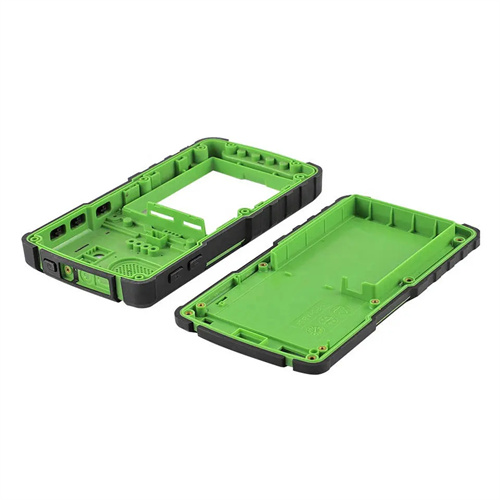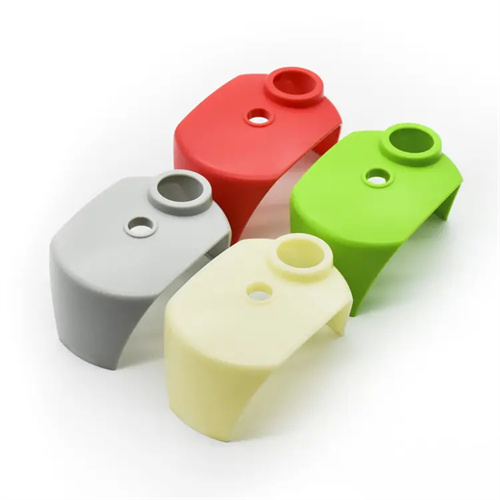Composite injection molding demolding is a combined demolding mechanism designed to address the challenges of demolding complex plastic parts. It organically combines two or more single demolding methods (such as ejector pin, ejector plate, inclined ejector, and pneumatic ejector) to achieve smooth and efficient demolding of plastic parts through collaborative operation. Compared to single demolding methods, composite demolding can handle more complex plastic part structures, such as those with deep cavities, undercuts, and bosses. It effectively prevents problems such as deformation, strain, and breakage during demolding, thereby improving production efficiency and part quality. For example, for a shell-like part with an internal undercut and a deep cavity, simple ejector demolding cannot simultaneously address both the obstruction of the undercut and the high demolding resistance of the deep cavity. However, a composite ejector and inclined ejector demolding method allows the inclined ejector to remove the undercut, while the ejector provides the primary demolding force, achieving smooth demolding.

The key to composite mold release in injection molding lies in the timing and force coordination of the various demolding mechanisms. When designing a composite demolding mechanism, the movement sequence and travel of each demolding component must be clearly defined to ensure no interference during the demolding process and even distribution of the demolding force on the part. For example, when using a combined ejector plate and pneumatic ejector system, the ejector plate typically first pushes the part out of the mold cavity a certain distance, breaking the tight fit between the part and the cavity. At this point, the pneumatic ejector system activates, using compressed air to blow the part off the ejector plate, completing the second demolding step. This timing control utilizes both the rigid ejector plate’s ejection force and the flexible pneumatic ejector force to prevent adhesion between the part and the ejector plate, making it suitable for parts requiring high surface finishes. Furthermore, force coordination is crucial. For large parts, composite demolding can utilize a combination of multiple ejector pins, ejector plates, and hydraulic cylinders to distribute the ejection force and prevent localized stress from causing part deformation.

Common injection molding composite demolding methods vary, each with its own application scenarios. Pin-and-plate composite demolding is a widely used method. The pin pushes against localized areas of the part (such as ribs and bosses), while the ejector handles the larger area of the part. This combination ensures uniform demolding force while adapting to the demolding requirements of localized part structures. It is suitable for medium-sized parts with concave and convex surfaces. Slanted ejector-core-pulling composite demolding is primarily used for parts with internal undercuts and external bosses. The slanted ejector addresses the internal undercuts, while the core-pulling mechanism handles the external bosses. Precise guides and limiters ensure coordinated movement and avoid interference between the two. It is widely used in complex parts such as automotive interiors and appliance housings. Pneumatic-mechanical composite demolding combines the flexibility of pneumatic demolding with the stability of mechanical demolding. It is suitable for thin-walled, easily deformed parts such as bottles and packaging boxes. It avoids part deformation caused by mechanical demolding while ensuring efficient demolding.

The design of a composite demolding mechanism requires comprehensive consideration of factors such as the part structure, material properties, and production batch size. For parts made of brittle materials (such as polystyrene and polycarbonate), composite demolding should prioritize a combination of flexible demolding methods (such as pneumatics and soft ejectors) and rigid demolding to reduce localized impact forces and prevent part breakage. For tough materials (such as polyethylene and polypropylene), the proportion of mechanical demolding can be appropriately increased to improve demolding efficiency. Structural design requires a rational arrangement of demolding components to ensure balanced forces. For example, ejector pins should be evenly distributed on non-exterior surfaces or ribs of the part to avoid ejection marks. The guides for the inclined ejector and core pulling mechanisms should be precise, using guide rails and guide posts to ensure motion accuracy. Furthermore, the overall size and cost of the mold must be considered. While composite demolding mechanisms can improve demolding efficiency, their relatively complex structure increases mold manufacturing costs. Therefore, for parts with small production batches and simple structures, careful consideration should be given to the cost-benefit balance and selection.

The commissioning and maintenance of composite mold release systems for injection molding are crucial to ensuring long-term stable operation. During the commissioning phase, mold trials are required to verify the correct sequence of each release mechanism. Travel switches, sensors, and other devices can be used to control the timing of movement, ensuring that the first-acting mechanism (such as the core puller and lifter) is fully engaged before initiating subsequent release mechanisms (such as the ejector pin and ejector plate). Furthermore, the release force should be tested, and parameters such as ejection speed and air pressure should be adjusted to avoid damage to the plastic part or incomplete release caused by excessive or insufficient release force. During routine maintenance, the moving components of the composite mold release mechanism, such as the guide grooves of the lifter and the clearance between the ejector pin and the mold plate, should be regularly cleaned to prevent plastic debris and oil accumulation that could cause movement jamming. Sliding parts should be lubricated, using high-temperature resistant grease to reduce wear. The tightness of connecting components (such as bolts and pins) should be checked to prevent loosening and resulting in operational deviation. Through scientific commissioning and standardized maintenance, the composite mold release mechanism can fully realize its advantages and provide a reliable guarantee for the efficient production of complex plastic parts.
